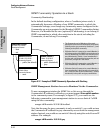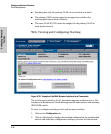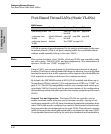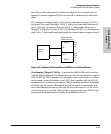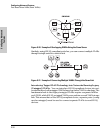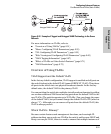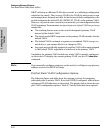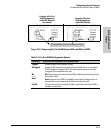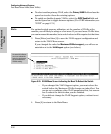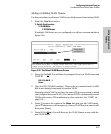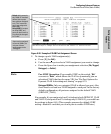
9-52
Configuring Advanced Features
Port-Based Virtual LANs (Static VLANs)
Configuring Advanced
Features
DHCP or Bootp on different VLANs do not result in conflicting configuration
values for the switch. The primary VLAN is the VLAN the switch uses to run
and manage these features and data. In the factory-default configuration, the
switch designates the default VLAN (DEFAULT_VLAN) as the primary VLAN.
However, to provide more control in your network, you can designate another
VLAN as primary. To summarize, designating a non-default VLAN as primary
means that:
■ The stacking feature runs on the switch’s designated primary VLAN
instead of the default VLAN
■ The switch reads DHCP responses on the primary VLAN instead of on the
default VLAN.
■ The default VLAN continues to operate as a standard VLAN (except, as
noted above, you cannot delete it or change its VID).
■ Any ports not specifically assigned to another VLAN will remain assigned
to the Default VLAN, regardless of whether it is the primary VLAN.
Candidates for primary VLAN include any static VLAN currently configured
on the switch. To display the current primary VLAN, use the CLI show vlan
command.
Note If you manually configure a gateway on the switch, it will ignore any gateway
address received via DHCP or Bootp.
Per-Port Static VLAN Configuration Options
The following figure and table show the options you have for assigning
individual ports to a static VLAN. Note that GVRP, if configured, affects these
options and VLAN behaviour on the switch. The display below shows the per-
port VLAN configuration options. Table 9-7 briefly describes these options.



